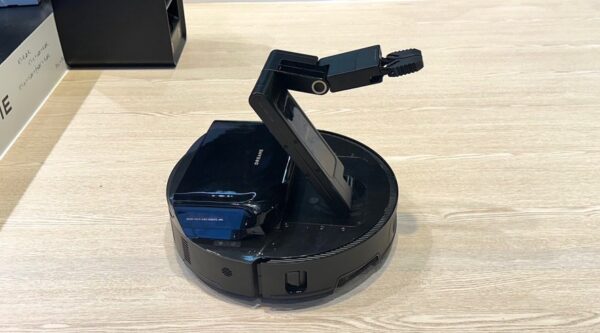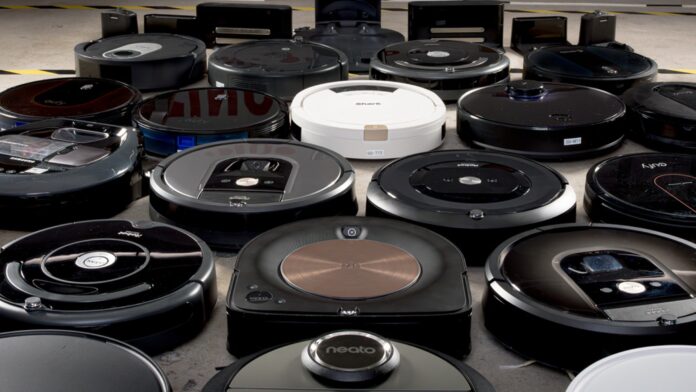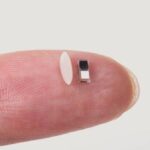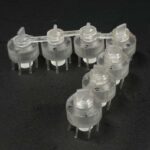Please welcome back Tarina Hawkins, a regular contributor to the 21st Century Tech Blog. In this posting, she describes how the newest generation of artificial intelligence (AI) equipped robots are changing the way we clean.
As I read Tarina’s words, I couldn’t help but think about our Roomba, which we have had for more than twenty years. I had told my wife back then to get me a Roomba for my birthday, which tells you just how much of a nerd I was then and still am now. I went whole hog, buying spare bins, brushes, a remote control and more. Then I watched it as it careened from wall to wall with no particular strategy, often going over the same floor space repeatedly, missing spots, getting stuck on carpets, tangling itself in power cords, and once or twice taking a tumble down the stairs. There was no AI in that Roomba.
What Tarina, however, is describing is a far cry from those early days of robot vacuum cleaners. Today’s robotic cleaning aids are very different. I’ll let her tell you the rest.
AI-Powered Robots Revolutionize Autonomous Cleaning
The latest generation of AI robot cleaners takes autonomous cleaning to the next level, thanks to algorithms that can map out spaces in 3d and recognize objects in real time. The Hytron, Primech AI’s new bathroom cleaning robot, is a great example. It uses the NVIDIA Jetson Orin Super System-on-Module, which gives it impressive 3d-cleaning functionality. It can clean commercial bathroom walls, floors, and fixtures on its own. But even better, its AI software is programmed to conserve water use, making it cleaning eco-friendly, especially if paired with electrolyzed water, a sustainable sanitizing agent.
The above is just one example of how AI-powered robots will transform how we clean our homes. Some new robots, like Roborock’s new Saros Z70, even feature AI-powered arms that identify obstructions on the floor and move them out of the way.
Autonomous 3d AI-Powered Cleaning
When integrated into these new robot cleaners, AI computing modules are processing real-time data collected using onboard lidar and cameras to map their surroundings and avoid obstacles. This is called situational awareness and allows robot cleaners to adjust their routing to get to hard-to-access spots. New robot AI-powered models with situational awareness not only see floors but also walls, and in bathrooms, even toilet bowls. Some models can even flush.
AI-Robots, Windows and Window Washing
Some AI-powered robots can do windows. The average American consumes an astonishing 1.22 trillion litres (322 billion gallons) of freshwater daily. Although window washing water consumption is not tracked or broken out in this statistic, any conservation of water is much appreciated in a country that is being challenged by growing freshwater scarcity.
AI-robot cleaners can save some of that water. They can look at the data their onboard sensors collect as they clean to track water levels, and adjust refill and discharge cycles to use less. When combined with electrolyzed water, these robot cleaners can deliver even greater cleaning efficiency and sustainability.
What is electrolyzed water? It is water produced when an electric current passes through water containing sodium chloride (salt). Electrolyzers are relatively cheap these days, and the water produced is effective in eliminating harmful microorganisms such as viruses, bacteria, biofilms, fungi and spores. When electrolyzed water is used, it eliminates the need to add chemicals such as disinfectants and detergents that would get flushed as wastewater. Better yet, if you need to replace existing windows in a home, there are manufacturers with ceramic, non-toxic surface coatings, between 1 and 100 nanometers in thickness, designed to resist dust and dirt, lessening the need for frequent window washing.
AI-Powered Robots that Tidy Your Homes
The next generation of robot cleaners has situational awareness. They are far more than autonomous vacuum cleaners and floor washing machines and can recognize small obstacles and move them out of the way using onboard robotic arms or claws as seen in the concept vacuum cleaner revealed at this year’s CES.

New robot cleaners are being equipped with onboard dual-transmitter solid-state lidar that uses two stationary lasers to create 3d detailed maps of surroundings. They also have onboard 3d Time-of-Flight technology that measures the distance to an object to help move around it with precision. The newest models are low-rise, unlike previous lidar-equipped robotic cleaners. Low rise means they can get under a couch or cabinet, places most of us seldom get to when cleaning. They can even tuck away that robotic arm when not needed.
The first Roomba appeared in 2002. Imagine what kind of robotic cleaning helpers we will see in the next two decades of the 21st century, considering how far the technology has come in 23 years.









